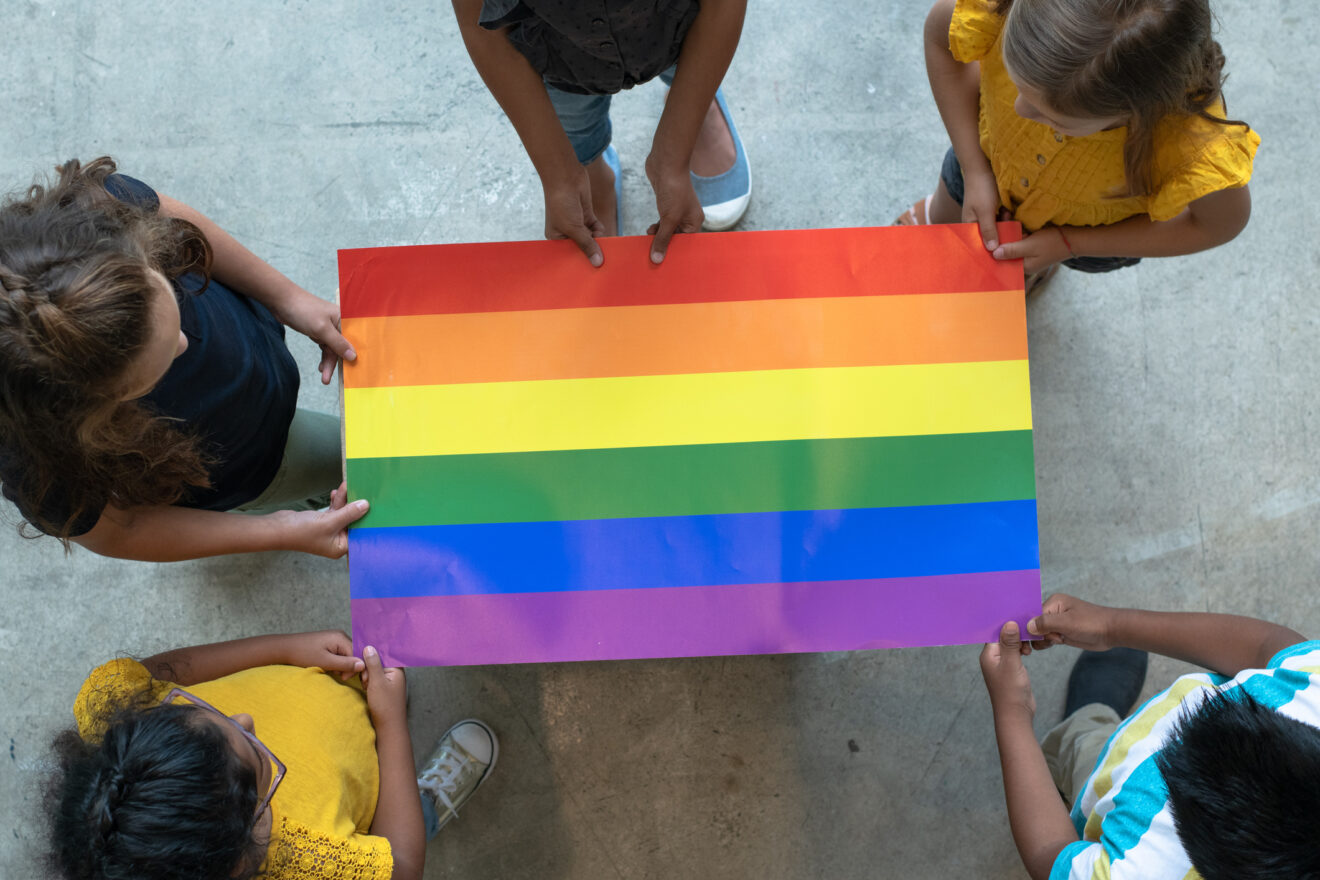
As of June, 16 states had passed laws restricting LGBTQ+ students’ rights in schools, colleges and universities. With book bans across the country targeting content related to minority experiences; bans on gender-affirming care for minors; and mandates requiring schools to out trans students to their parents, making students feel unsafe; and a slew of unhelpful and bigoted new requirements for classroom teachers in states like Florida, being an educator in America has become highly politicized.
These conversations quickly lose sight of why most of us became teachers in the first place: our students. Supporting and protecting our LGBTQ+ students is not a political issue, but a mandate of our profession. When students don’t feel safe and supported, they can’t learn. It’s as simple as that.
How to help LGBTQ+ students
Here are five ways that you can create safety for queer students, even amid a culture war that finds educators in the crosshairs.
Give visible cues that show you are a safe person. It can often be difficult for students to discern which adults are trustworthy. Posting a pride flag or poster in your classroom, wearing a pride pin or pronoun pin on your school lanyard or having a similar visual indicator on your person or in your classroom can be an easy way for students to identify you as someone to trust.
Become the adviser for an LGBTQ-affirming club. Create more safe spaces in your school by founding a Gender & Sexualities Alliance. Having a club that focuses on fostering queer community, addressing queer issues and giving students permission to be themselves can have an enormous impact on your school community. However, if your administration is not supportive, consider opening your classroom at lunch and allowing students an informal safe space.
Be honest about who you are. In her much-lauded TED Talk, educator Rita Pierson said, “Children don’t learn from people they don’t like.” Honest relationships with students are the foundation of all learning, and when we show up as our truest selves, students notice (just like they can tell if you’re not being yourself).
If you are part of the LGBTQ+ community, consider what it would mean for you to be out at school, keeping in mind your own safety. Having visible queer adults present can have a huge impact on kids who might otherwise never see or know a queer person.
If you are an ally or advocate, remember that the job of working against hate should not only fall on LGBTQ+ people. In your get-to-know-me slides at the beginning of the year, think about adding in things you are passionate about, which could include working with LGBTQ+ students and LGBTQ+ rights.
Advocate with the administration for your students. As teachers, we are on the front lines with students, hearing their wants and needs. While some of these wants may be trivial (i.e., “I don’t like the school lunch on Wednesdays.”) other complaints are legitimate (i.e., “I am trans, and I don’t feel comfortable using a bathroom during the school day because none match my gender.”) For those bigger issues that students vocalize to you, hear them out and bring these issues to the attention of school leaders.
One of the things that inspired me to apply for a grant with the It Gets Better Project was hearing directly from students that they felt educators and staff at our school would benefit from LGBTQ-inclusive training, Pride Week activities, LGBTQ+ history lessons and more. You are the direct line between students and the power systems in your school building. You have the power to speak on their behalf when there are problems.
Additionally, learning the skills of peaceful protest and advocacy is invaluable. Depending on the scale of the issue, it may be appropriate for students to stage a walkout, create protest signs or engage in another kind of civil disobedience. Amplifying their voices and teaching them their voices matter is a pivotal part of helping them to become informed, engaged citizens.
Provide LGBTQ+ community resources. While many of us wish we could conquer every issue within the school day, it is not feasible that you or your school will be able to handle every problem a student is having. Research which organizations in your community are doing the work for LGBTQ+ people, and create a list. Relying on outside community support — especially if your school district has strict anti-LGBTQ+ policies — and referring students to these resources can be an effective way around restrictions. Keep in mind the socioeconomic level of your school community, and seek resources that may be free to the public. When helpful, refer students to this community assistance.
Showing you care, building connections
While there is no one-size-fits-all solution for combating hate and creating safe spaces for students, using these five tips can help show students who you are and how deeply you care for them, regardless of who they are. You might be surprised at the connections you’re able to make and the effect your advocacy can have on the school community.
Sarah Dean (she/they) is an eighth-grade English teacher based in Nashville, Tenn., with a passion for uplifting LGBTQ+ students. Dean’s school was the recipient of a $10,000 grant from the It Gets Better Project during the 2022-23 school year, and Dean played a pivotal role in implementing new LGBTQ+ programming at her school.
Opinions expressed by SmartBrief contributors are their own.
_________________________
Subscribe to SmartBrief’s FREE email ASCD newsletter to see the latest hot topics in education. It’s among SmartBrief’s more than 250 industry-focused newsletters.
